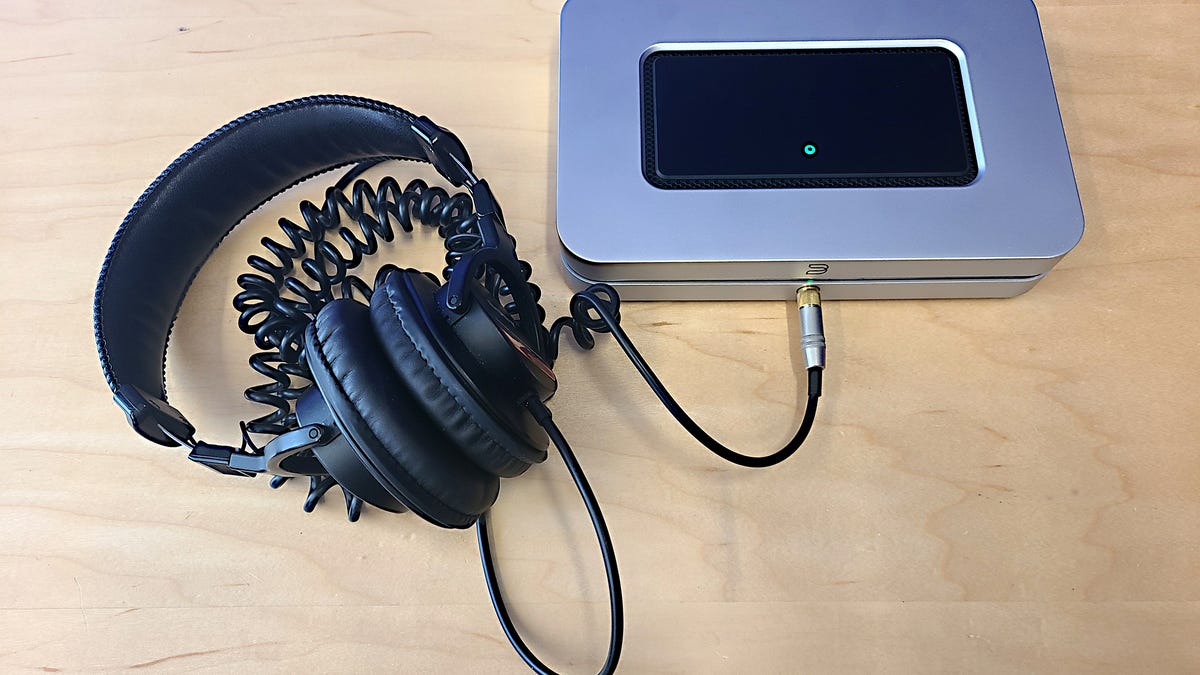 Why You Can Trust CNET
Why You Can Trust CNET Bluesound Node X: Hands-On With the Upgraded Music Streamer
The special-edition wireless multiroom hi-res streamer features HDMI eARC, a dedicated headphone amp and impressive sound for $749.

The Bluesound Node X features an onboard headphone amp
Wireless audio device maker Bluesound has a new music streamer, the Node X. It's a 10th-anniversary special edition of its popular $599 Node wireless hi-res streamer, but with a host of new features and a predictably higher price. I went hands-on to find out if it's worth the extra outlay compared to the original.
Design-wise, the $749 Node X is exceedingly similar to the Node with its top-mounted touch panel and rounded edges. But for the X, it gets an attractive silver finish. Again, there are several new features on the X, including a dedicated headphone amp and an HDMI eARC input. Though it may be easy to miss the headphone output on the original Node, there's no mistaking it here -- it's a large, silver quarter-inch jack front and center on the unit. The output features THX AAA (Achromatic Audio Amplifier) technology for what the company calls a "no-compromise headphone listening experience."
Replacing the laid-back sounding Burr Brown PCM 5242 DAC of the Node is an ESS 9028Q2M Sabre DAC. This digital converter is also used in the Cambridge Audio DacMagic 200M and gives it a clearer sound than the original (more on that below).
Unlike a streaming speaker, the Node X is designed to be connected to an existing stereo system and features over 20 apps, such as Spotify, Apple Music and Tidal. Connectivity options include HDMI eARC, dual-band Wi-Fi, Ethernet, aptX HD Bluetooth and USB. On the audio side, there are stereo RCA, coaxial digital and a subwoofer output, plus a combined optical/analog input. In addition to the device's BluOS streaming platform, the Node X also includes Apple AirPlay 2 compatibility.
Further propping up the value proposition of the Node X is the inclusion of the $59 RC1 remote control, which is designed to work with the nearest Bluesound device. The streamer can also be controlled with the BluOS app or through voice assistants like Apple's Siri, Amazon Alexa and Google Assistant.
Hands-on
The Node X features the $59 RC1 in the box
I compared the Node X against the original Node, both when connected to our reference Onkyo TX-RZ50 and Q Acoustic 3050i system and driving a pair of Sony MDR-V6 headphones. I started by listening with headphones, and the differences between the two players were immediate -- the Node X is able to deliver better detail. The Node was noticeably more relaxed. If you have a good set of headphones, the Node X would be a great way to drive them. It could also be used as a pre-amp for an amplifier with its eARC and optical inputs.
Using the analog output of the Node on my home system was great as it helped tame the high-end, but the Node X would be an excellent addition to a system that needs a little more pep, too. Listening to folk, rock and dance was truly enjoyable using the analog outputs to the CNET AV system, presenting the same added detail I'd noticed with the headphone output. For example, with Tony Molina's I Don't Like That He, the strummed acoustic guitar had more presence than via the Node, and the bass was a little better defined.
Whether you have an existing Bluesound system or are looking for a higher-end way to stream to your existing hi-fi, then the Node X delivers pretty much everything you could need. If you're trying to decide between the Node and the Node X, the latter is a significant upgrade and more than justifies the extra $150.
The limited-edition Bluesound Node X is available now for $749.

